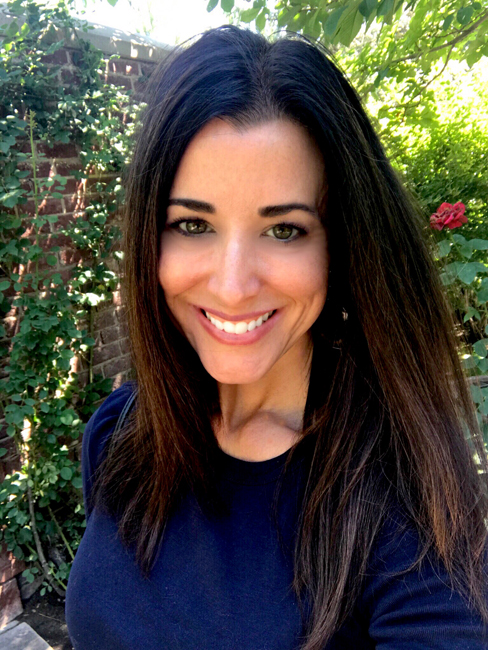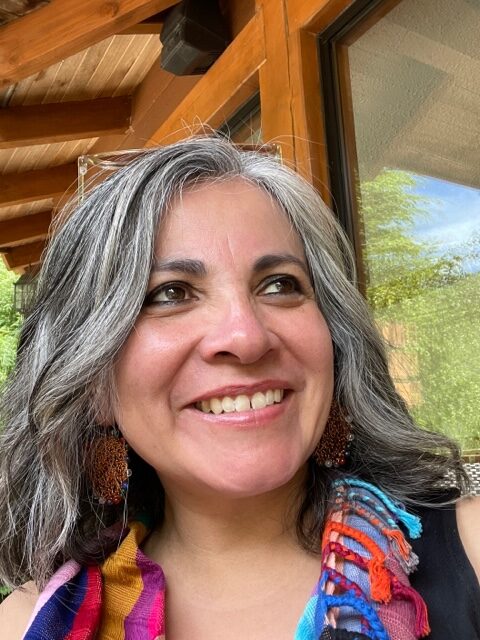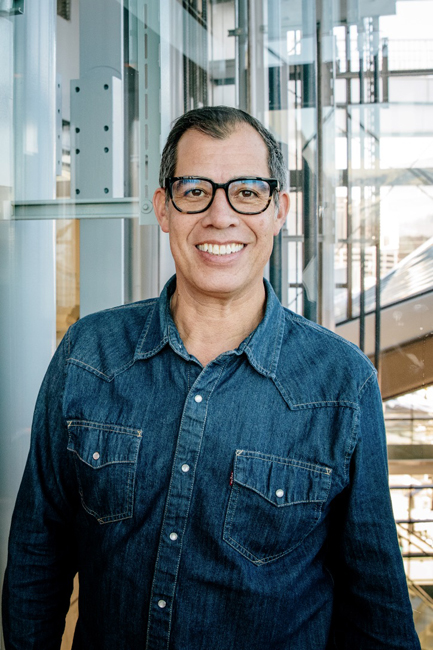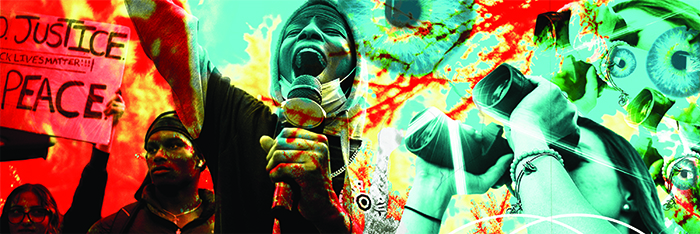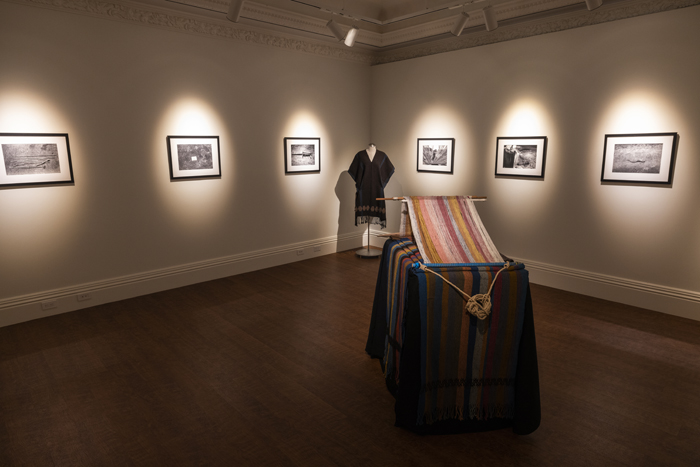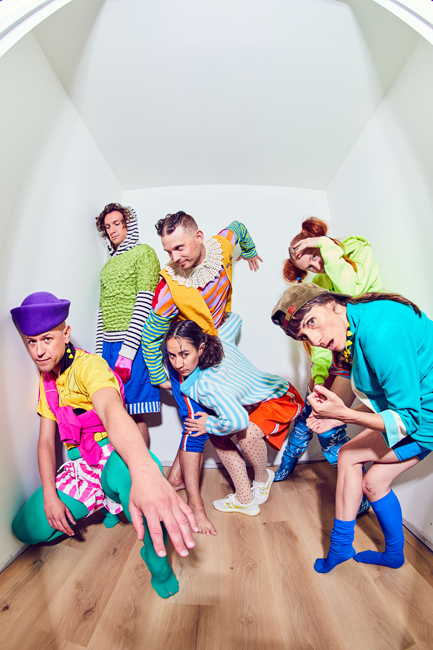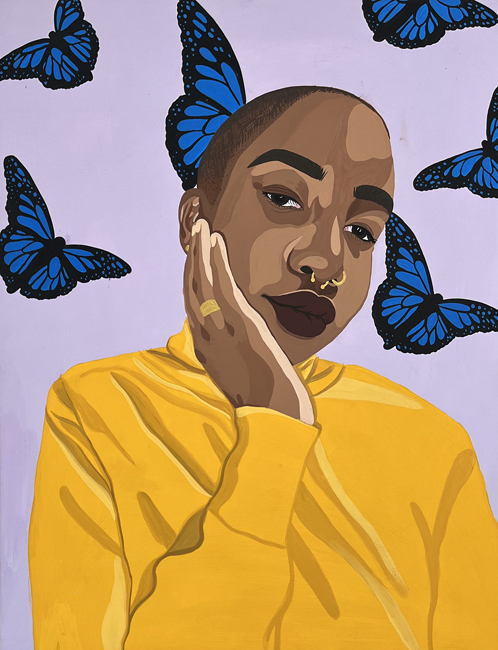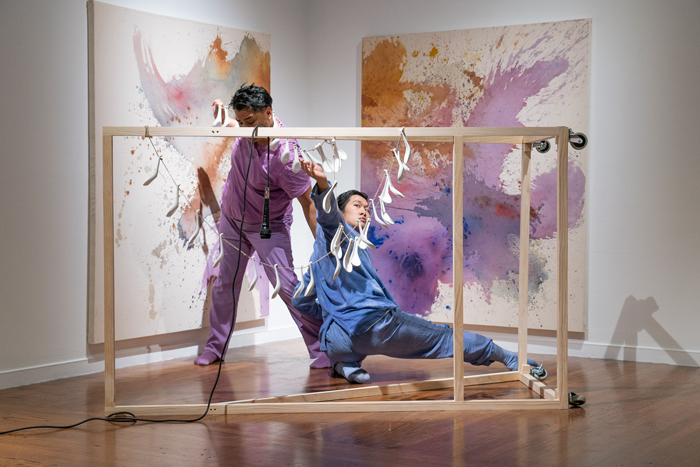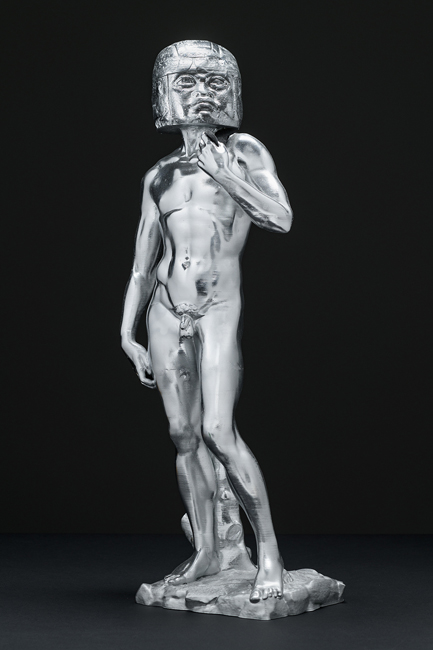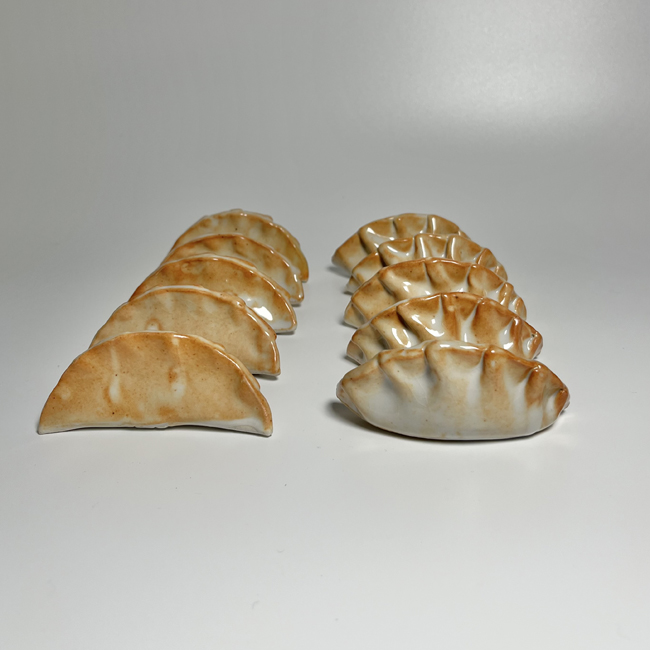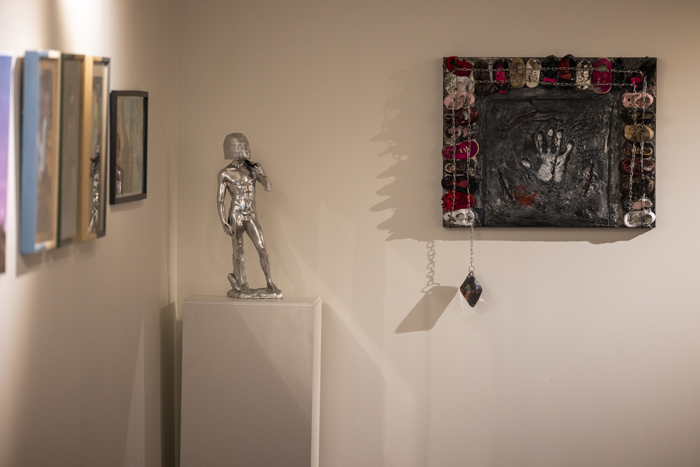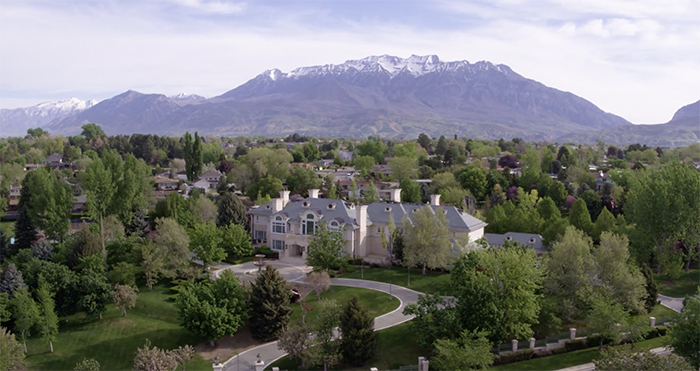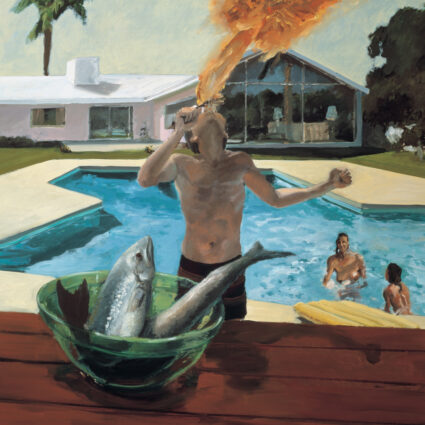Utah Valley University is set to open a new museum inside of an old manor. The debut super exhibition, The Art of Belonging, centers BIPOC voices with connections to Utah.

OREM, UT—People of many backgrounds call Utah and Utah County home. Despite the state’s definitive white, Mormon majority, diverse people exist here—and so do their stories and experiences, however complicated by this hegemony.
As Utah Valley University Museum of Art nears the opening reception for its new space at Lakemount, its inaugural exhibition, The Art of Belonging, creates a forum for diverse Utah-rooted artists to investigate what it means to belong. Explorations of “dis-belonging” also enable artists to query what it means to not belong—how it feels and what it looks like to be “othered” in addition to the ease of belonging outright.
In terms of UVU’s community, exhibition co-curator and Artes de México en Utah executive director Fanny Guadalupe Blauer shares a message that crescendos the curation of The Art of Belonging.
“Start believing that you belong,” she asserts.
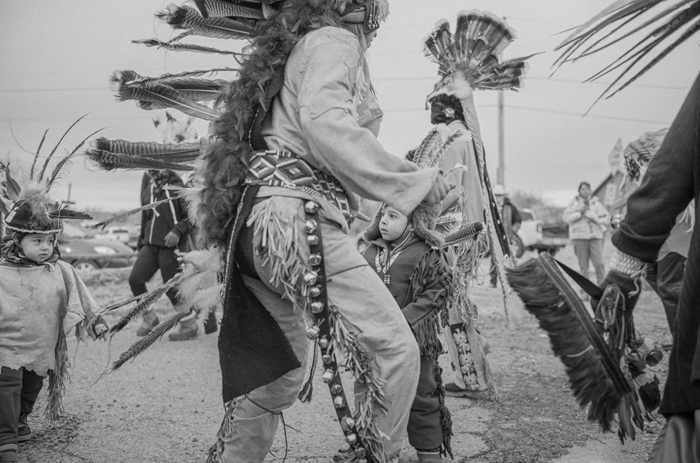
Come opening day, scheduled for this Saturday, May 13, The Art of Belonging will treat attendees to visual and performance art rooted in BIPOC perspectives. The show’s core programming, which lasts through September 16, 2023, includes The Art of Belonging: Juried Exhibition, photography from Tzotzil Mayan artist Maruch Sántiz Gómez, work from co-curator and Salt Lake City-based multidisciplinary artist Jorge Rojas, and The Art of Belonging: Performance Art Series. With varied public offerings also in store, Lakemount is poised for an inclusive, welcoming environment with a community-rooted approach to art.
Lakemount was once the estate of Melanie Bastian, who passed away in 2017. Her sons gifted Lakemount Manor to UVU Museum of Art to honor her legacy of community-minded generosity.
“She had, in the past, opened up her home for UVU on multiple occasions,” says UVU Museum of Art at Lakemount director Lisa Anderson. “She had a passion for art and for education, and her family felt like a natural fit for the use of the home going forward—which she loved dearly—would be used by the community.” To boot, Anderson views Lakemount’s continued openness and welcoming aura as extensions of UVU’s mantra: “There’s a place for you at UVU.”
Rojas describes the space—think gilded rococo adornments—as nothing short of gorgeous.
“You can imagine: old, high ceilings with a chandelier, beautiful windows,” he says. “I was really excited about the opportunity—and so was Lisa, when we were talking about what to show there—about this idea of juxtaposing minimalist, abstract work inside what you would expect in a classic mansion, that architecture. It’s also sending a message that they really value contemporary art.”
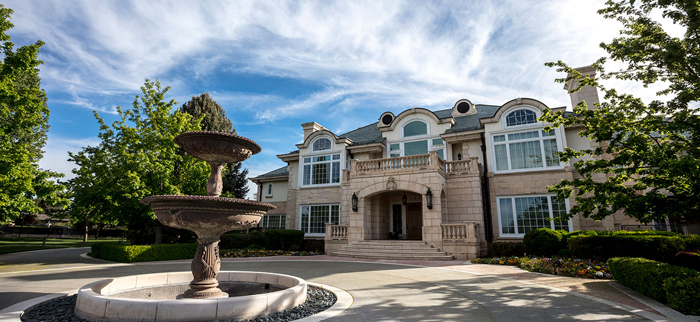
Anderson recalls that it took about a year to formalize the donation. Renovations have been ongoing ever since in order to convert the mansion into a museum and ensure that it’s up to code.
Anderson first approached Rojas about activating the museum-to-be in this way in 2021. She’d met him through museum colleagues and contexts, had struck up a friendship and dialogue with him, and has long admired his work.
“I had started to talk to him about this new adventure at UVU and, really, my desire to make the museum a place welcoming to the community, to be a place where everyone would be able to come and have dialogue and shared experiences,” Anderson says. “We are a community art museum where everyone is welcome.”
Rojas has also lectured in Anderson’s museum studies course and is known for social justice advocacy through his work. He, in turn, was quick to bring Blauer into the fold in order to build a community-education infrastructure for The Art of Belonging. Blauer and Artes de México en Utah tout deep community outreach and education in the arts, with a propensity for connecting with and centering diverse Spanish-language experiences.
“Fanny and I’ve known each other for about ten years,” Rojas says. “We’ve collaborated on numerous initiatives, always having to do with Indigenous cultures, with diversity, with inclusion, with all the [DEI] stuff… she does the hard, deep work that nobody else wants to do.”

Rojas took on dual roles as an artist-in-residence and co-curator for the show. The curatorial trio wanted to push back against art museums’ history of Eurocentrism and to underscore their drive for inclusivity through a focus on people over objects. They kept returning to the idea of belonging and ultimately decided for it to be the overarching concept for the show.
“When we came up with that name, I think it was a self-reflection of what it is to belong for myself as an immigrant and being part of a minority and what we call people of color,” Blauer relates. “It was really going through a deep self-analysis of why are we in this country and do we feel that we belong, and why do we feel that we belong?”
In this light, Rojas, Blauer, and UVU Museum of Art put out a call for entries for The Art of Belonging in late February 2023 for the program’s Juried Exhibition. Its press release invited “BIPOC… artists working in the state of Utah and with Utah roots to submit work that explores themes of belonging and dis-belonging.” Rojas estimates that Juried Exhibition will house around fifty artworks from about forty artists. The show includes diverse ethnic backgrounds along with an LGBTQ+ presence, all across an array of visual art mediums.
Different threads of belonging will lend texture to the show, sometimes in ways uniquely Utahn. Rojas was surprised by one piece from a Utah expat living in New York: We Didn’t See It As a Tidal Wave by Gi (Ginny) Huo and Saif Al-Sobaihi.
In the video, Huo retraces the story of her grandfather, the first Mormon convert in Incheon, Korea, according to the artist. “In the video, Huo tackled questions like what informs our belief systems—and are they real or imagined?” Rojas says. “I was very happy to see that someone actually did that.”
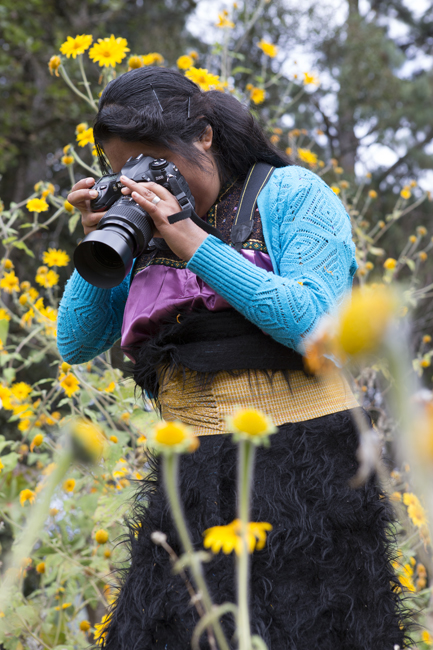
The Art of Belonging also leverages Blauer’s and Artes’ Mexican-art connections. Artes became a member of the Mexican Alliance for Arts and Culture in 2021, which enabled Blauer and Rojas to visit Chiapas, Mexico, to survey artists in the hope of bringing someone’s work to the Beehive State. They were both impressed upon seeing Sántiz Gómez’s work and found that she’d already achieved international renown, having shown her work various times in New York and Europe.
Sántiz Gómez, also a climate activist, poet, actress, and narrative textile weaver, will feature photographs of objects from her Tzotzil community with a “minimalist aesthetic that [is] pure and raw,” as Rojas puts it.
The Alliance and the National Museum of Mexican Art will sponsor Santíz Gómez’s exhibition, titled Beliefs of Our Forebears.
Beliefs of Our Forebears speaks to “a huge part of our traditions, and not only in the Mexican tradition, but those beliefs or those sayings that you grew up with with your grandmother or your mother or elders that really [teach] so much of the wisdom from the people,” Blauer informs, speaking to Sántiz Gómez’s photos and the accompanying text alongside them—Tzotzil adages to be printed in Tzotzil, Spanish, and English.

Rojas will bring a tour de force to Lakemount. His exhibition Material Meditations comprises minimalist abstract work that articulates Rojas’s affinities for his Mexican roots and Mesoamerican culture and cosmovisión. Two of his performance video pieces, Chac Mool and Dance for Our Departed, will be projected in the gallery space. He’ll also show a new installation in his corn mandala series.
“I’m using the flower of life symbol, which is sacred geometry, and then I’m extending out with a number of symbols,” Rojas elaborates. “One is the chakana, which is the first time I’ve used this symbol, also known as the Incan cross. It’s used by the Inca and pre-Incan Indian societies. There’s a lot of people from that part of the world in Utah, including some relatives of mine, so I really wanted to acknowledge that.”
Rojas also programmed The Art of Belonging: Performance Art Series. With connections to UVU’s Department of Dance, Heartland Collective offers a playful roaming performance, Roundabout, to activate different spaces within Lakemount on June 3. On June 24, artist Mitsu Salmon will show Somatic Tracing, which explores the history of Asian labor in the U.S. with an all-Asian American cast. And Punto de Inflexión presents Vanished Vibrations on July 18, taking inspiration from “the embodied memory of female-gender violence victims, within the Mexican context,” states Rojas, who will also perform a piece on August 1.
What’s more, the opening reception on May 13 will see multicultural song and dance from college student group Remembering Our Culture, inclusive of Native American, traditional African, Polynesian, and Asian traditions. A live set from DJ Chris will invite attendees to get down on the dance floor.
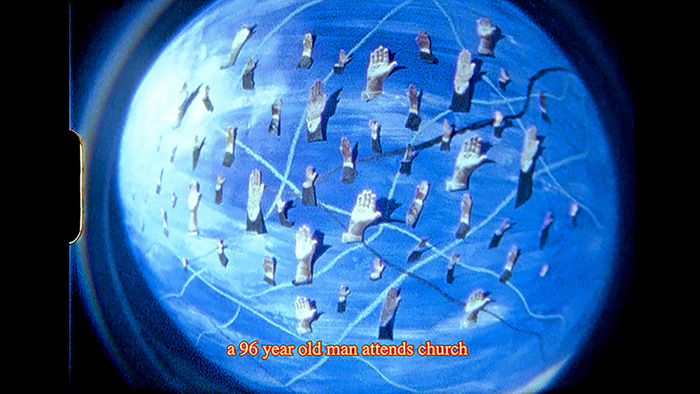
Not least of The Art of Belonging is its educational programming—there are various public offerings each month at various times of the week, up through the The Art of Belonging’s conclusion in September. There will be a BIPOC artist panel from the Juried Exhibition and three workshops of Artes’ curriculum called Born from Corn, which Sántiz Gómez will lead, unpacking the program’s central motif of corn. Sántiz Gómez will also give a lecture on August 8.
Whether it’s the artists, museum attendees, or educational participants, The Art of Belonging entreats Utahns of diverse backgrounds to celebrate their cultures together. UVU Museum of Art has devoted the first half of Lakemount’s first year to The Art of Belonging. After that, it will show standard exhibitions, including a diverse, juried BFA show and a faculty show. From its outset, UVU Museum of Art at Lakemount wishes to drive home that cultivating a space for belonging is a first step in spurring dialogue and mutual understanding within an institutional context.
“It’s important that we acknowledge that, historically, there have been certain communities that have not been well-represented in institutions, so this is a corrective,” Rojas asserts.
